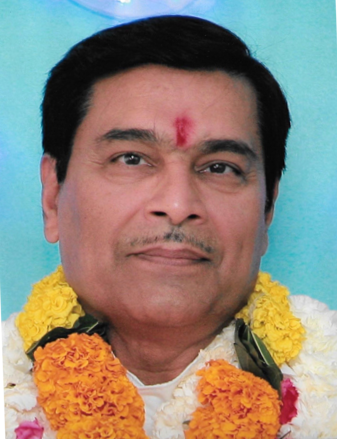From a satsang with Pt. Balram Persad, Spiritual Leader, SWAHA Om Shakti Mandali
In Sanaatan Dharma’s wealth of spiritual wisdom and celestial insights, we discover myriad occasions that beckon us to reflect, renew our commitments and realign with the profound spiritual goals envisioned by the venerable sages and sacred scriptures. Amidst the kaleidoscope of divine revelations, Makar Sankranti emerges as a luminous gem, a celestial moment urging us to consider our spiritual aspirations.
In every year, there unfolds 12 Sankranti, each a sacred occasion inviting introspection and devotion. Yet, among these celestial occurrences, the ultimate significance is bestowed upon those occurring in the months of Margha (January-February) and Chaitra (March-April) in the resplendent Hindu calendar. Makar Sankranti, a celestial ballet, marks the sun’s northward sojourn from the cosmic stage of Dhanu raasi (Sagittarius) to the realm of Makar raasi, Capricorn. As the 10th sign in the zodiac, Capricorn, Makar orchestrates its celestial ballet during the 11th month of the Hindu calendar, embarking on a six-month odyssey known as uttarayan.
This northward progression, while not a physical migration of the sun, holds profound astrological significance, symbolising the influence of the sun on worldly events. Astronomy teaches us of planetary positions; astrology unravels the mystical influence these positions weave upon the cosmic symphony.
In its essence, the sun’s northward trajectory across the earth mirrors an internal pilgrimage within the individual—a fundamental tenet of Sanaatan Dharma, asserting that the external world mirrors our inner cosmos. While Makar Sankranti chronicles the cosmic ballet and its impact on terrestrial events, it also prompts a transformative journey from ignorance to enlightenment. True metamorphosis originates from within, urging us to transcend negativity and embrace the radiance of positivity—a profound rite for those ardently committed to their spiritual evolution.
The sun’s northward odyssey breathes vitality into all realms of existence. Revered as the presiding deity of the aatma—the self—it is the sun that illuminates the human intellect, with the moon presiding over the realm of the mind. The cosmic interplay between sun and moon cascades into the elaborate dance of the chakras, those energetic vortex points within the human form. Initiating at the muladhaar chakra, the dwelling place of Lord Ganesh at the spine’s base, this revitalising journey ascends to the sahasraara chakra above the head—a sacred space where enlightenment beckons. This upward journey signifies our spiritual ascension, a path paved with prayer, fasting, meditation, hawan, glorification, and other spiritual practices as illuminated by the sages.
Resonating with the cosmic dance, the parallels between the physical and internal suns unfold. As the physical sun banishes darkness and suffering, the sun within—the intellect of man—bestows the light that dispels the shadows of pain, suffering and ignorance. In this cosmic play, the visible sun becomes a tangible deity—our earthly gods embodied in parents, Gurus and the nurturing embrace of Mother Earth.
Furthermore, mirroring the zodiac’s 12 signs, the Shrimad Bhagavata Maha Purana unveils a profound truth—the presence of 12 suns within the human form. These suns, encapsulating the 12 principles or energies, serve as conduits to visualise, experience and realise the Divine. As Makar Sankranti graces our existence, let us fervently recommit ourselves to the transformative journey from ignorance to self-knowledge—a sacred pilgrimage that transcends the temporal and ushers us into the eternal realm of the Divine.



